#hinton animation studios
Explore tagged Tumblr posts
Text

#movies#polls#the teddy bears’ picnic#the teddy bears picnic#teddy bears’ picnic#teddy bears picnic#80s movies#bill speers#lacewood productions#hinton animation studios#requested#have you seen this movie poll
146 notes
·
View notes
Text
intro post
hello, i go by dozing/doze on here (hermit is fine too if you still wanna use that)
im seventeen and a switch in the sfw tickle community. ive ran a few other blogs in the past, but abandoned them out of self-hate. i have not too recently accepted and embraced this about myself, and after lurking for a while, i have started a new blog.
i view tickles as a fun, silly, bonding activity for friends, lovers, or family, and just a cute part of the human condition. i adore seeing people laughing. i love laughs a lot. maybe a little too much.
i occasionally do tickle art and (rarely, but sometimes) tickle writing/scenarios. this blog will likely mostly consist of random thoughts, art, cute stuff i see or think, or other interactions within the community.
i love talking with others in the community like me, so never hesitate to dm me or anything. id love to chat and make a few friends here.
*unfurls a long scroll*
fandoms
(bold = currently my favorites, strikethrough = dormant, italics = just got into it)
the outsiders by s.e. hinton
atsv
minecraft
adventure time
steven universe
little big planet
sanders sides
critical role (campaign 2)
hermitcraft
fantasy life (3ds)
commentary youtube
studio ghibli
harvest moon: tale of two towns
pokemon (sun/moon or sword/shield mostly)
avatar the last airbender (animated)
my ocs + original universep
big hero 6
octonauts
wild Kratts
gravity falls
d&d
delicious In dungeon
inside out 1 + 2
the lego movie
bluey
9 (movie)
acnh
teen titans go
marvel
these change like.. every week, so definitely be sure to come back to it every so often if you're curious. i usually bounce between all of these things, however, it's very rarely that the list will expand.
other stuff i like
70s-80s/vintage aesthetic and fashion
70s-80s (and a bit of before/after) music
alternative styles and music in general
found family tropes
anything really paganism/witchcraft related
mythology
nintendo and old games
writing, reading, drawing
conlangs/other made-up languages
silly animals like deer, crows, beetles
uhhh i might add to this
dni/other iffy things
if you apply to any of the following labels, please do not interact with me or my blog. thanks!
NFSW or partially NSFW blog (unless you have tags i can block)
age 30 or older. if i meet you before then and you are a good person and we know eachother when you turn 30, i can make an exception.
feet-centered blog or someone with a foot fetish. you do you, i have no problem with whatever you like, but it is not my thing and makes me uncomfortable.
prefer solely/mostly heavy bondage or tickle torture and/or have a blog centered around it, again, you do you but it scares me lol
homophobic, transphobic, misogynist, sexist, etc. need i explain. i am under the trans umbrella and gay. so if you don't like it fuck off respectfully
think witchcraft/pagan religions are "of the devil" or evil or whatever. i am a practicing witch. i respect and try to understand all religions. please do the same to me.
proshipper or a proshipping supporter.
a vore enjoyer sexual or nonsexual. sorry and no personal hate to you but that stuff terrifies/disgusts me
enjoy/create irl tickling content. yes, this includes youtubers, actors, kpop groups, etc. they're real people and i feel that it is weird and icky to make that sort of content without their consent. thats a real person
these may change as i grow and i will likely do a post indicating it. thanks for reading all that.
anyways, even though im not technically new, i hope you all welcome me back to the community.
24 notes
·
View notes
Text


CALIFICACIÓN PERSONAL: 5 / 10
Título Original: Master
Año: 2022
Duración: 91 min
País: Estados Unidos
Dirección: Mariama Diallo
Guion: Mariama Diallo
Música: Robert Aiki Aubrey Lowe
Fotografía: Charlotte Hornsby
Reparto: Regina Hall, Amber Gray, Zoe Renee, Talia Ryder, etc
Productora: Amazon Studios, Animal Kingdom, Big Indie Pictures. Distribuidora: Amazon Studios
Género: Horror; Drama; Mystery; Thriller
TRAILER:
youtube
0 notes
Photo










Hardnut Story shots from Paul Schibli’s The Nutcracker Prince (1990), a @warnerbrosentertainment picture from Lacewood Productions.
The art direction of the nearly 15-minute Hardnut Story looks like some Chuck Jones cartoon IMHO. The characters aren’t shaded throughout, but the animation quality is still cinematic (and filmed cel animation).
This film is a forgotten piece of Warner Bros. Animation history, but the DVD is from GoodTimes Entertainment for some reason. Worthy of the @warnerarchive, though.
The film’s production company, Lacewood Productions, provided Animation Services on Season 1 of The Ren & Stimpy Show. Character Designer/Key Animator Drew Edwards also boarded on The Ripping Friends, Doug and Wild Kratts.
BACKGROUND DIRECTOR, LAYOUT DIRECTOR - HARDNUT STORY, BACKGROUND ARTIST: Michel Breton
ANIMATION PRODUCED AT Hinton Animation Studios Inc.
STORYBOARDS, CHARACTER DESIGN: Chris Schouten, Paul Schibli
STORYBOARDS, CHARACTER DESIGN, ANIMATION POSER: Shivan Ramsaran
ADDITIONAL STORYBOARDS: John Williamson, Larry Cariou
STORYBOARD DESIGN, BACKGROUND ARTIST: Peter Moehrie
CHARACTER DESIGN, ANIMATION POSER, KEY ANIMATOR: Jamie Oliff
CHARACTER DESIGN, ANIMATION POSER: Bill Spears
CHARACTER DESIGN, KEY ANIMATOR: Drew Edwards
CHARACTER COLOUR DESIGN: Martin Butler, Denyse Ouellette
LAYOUT ARTISTS and ASSISTANT ANIMATION feature: Dean DeBlois (as Dean Deblois)
HARDNUT BACKGROUND ARTIST: Gordon Coulthart (as Gord Coulthart)
ADDITIONAL ANIMATION feature: Kirk Tingblad
CLEAN-UP ANIMATORS feature: Scott Mansz
Tweet version here.
#the nutcracker prince#hardnut story#hardnut#hardnuts#nutcracker#nutcrackers#cartoon#cartoons#cinematic#lacewood productions#warner bros. animation#warner bros animation#wb animation#1990#1990s#drew edwards#dean deblois#paul schibli#hinton animation studios#michel breton#gordon coulhart#90s animation#90's animation#1990's animation#1990s animation#throwback thursday#tbt#throwback thursdays
15 notes
·
View notes
Text
David Wittels -Savage Dragon – Illustrator – Lacewood Productions
David Wittels -Savage Dragon – Illustrator – Lacewood Productions
David Wittels -Savage Dragon – Lacewood Productions
Lacewood Productions was a Canadian animation studio based in Ottawa, Ontario. It produced a television series, Katie and Orbie, as well as specials based on For Better or For Worse, and the 1990 feature The Nutcracker Prince. In 1997, Paragon Entertainment Corporation took over the studio due to debt reasons. Paragon eventually folded, with most of Lacewood’s library and former assets being acquired by Amberwood Entertainment in 2000.
Lacewood was the successor to Hinton Animation Studios, a company created by Sheldon Wiseman, which closed down due to debt problems.
The very first productions made by the studio were The Railway Dragon and its sequel The Birthday Dragon.
Lacewood has also done animation services on the first season of The Ren and Stimpy Show.
Lacewood has also done animation production in partnership with Universal Cartoon Studios on season 2 of Problem Child, Monster Force and 1995 episodes of The Savage Dragon.
David Wittels, Savage Dragon, Barbie & the Diamond Castle, Staff Manager. David Wittels is a professional illustrator from Vista, California. He has been nationally recognized by his sports illustrations & outdoor photography. He loves to travel with his wife and children Brooklyn, Montana, & Jefferson.
#David Wittels#David-Wittels#DavidWittels#David_Wittels#Savage#David Wittels -Savage Dragon – Illustrator – Lacewood Productions
1 note
·
View note
Text
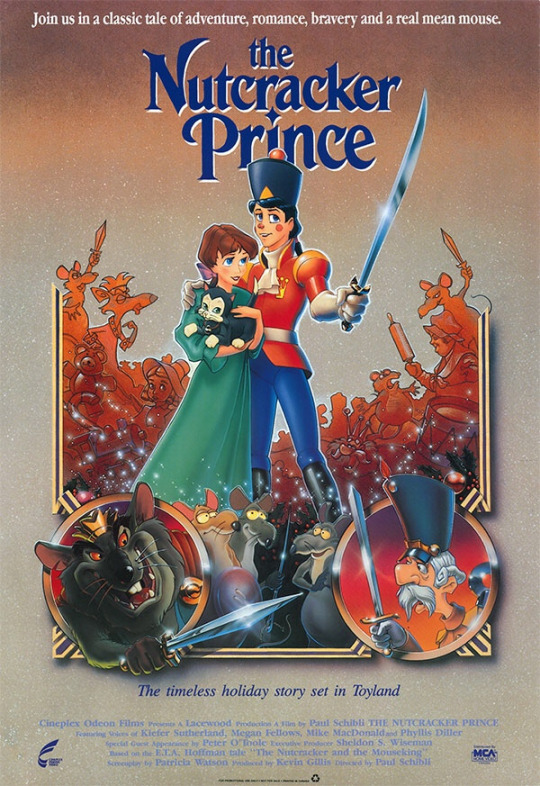
Merry Christmas everyone! To conclude this month of merrymaking we’re looking at an animated Christmas cult classic that I have a bit of a soft spot for. But perhaps it’s best to start at the beginning:
ETA Hoffman’s “The Nutcracker and the Mouse King” is one of my favorite fantasy stories, though chances are you’re more familiar with the famous ballet by Tchaikovsky that it inspired. The music is gorgeous and instantly recognizable, but few know the actual story of The Nutcracker beyond what your average community production rolls out every December. Much of the plot plays out like a variation of Beauty and the Beast with a protagonist akin to The Wizard of Oz’s Dorothy and story elements that wouldn’t feel out of place in a Grimms’ fairytale. Sadly, most of those details were lost in the translation from book to light holiday entertainment. Not that I’m complaining, I love the ballet, but there’s so much more to its origins that people aren’t usually interested in delving into.
I say all this because today’s movie, The Nutcracker Prince, is one of the very few filmic adaptations that pays faithful tribute to both its source material and its theatrical counterpart. In spite of – or perhaps because of – the popularity of the ballet, there’s been only a handful of film versions of Hoffman’s The Nutcracker (or at least a handful compared to something like A Christmas Carol). How good you find each of them to be depends upon your taste and the production value. I’ve found remarkably little about the making of this particular adaption, but that probably has to do with the fact that it was barely a blip on the box office radar. Released through Warner Brothers (which itself would issue another Nutcracker movie starring Maculay Culkin six years later), this was the only full-length animated feature created by Canada’s Lacewood Productions. A shame, really, because looking at The Nutcracker Prince you can see the studio’s potential. But thanks to the home video circuit, the movie has found a new life as a nostalgic Christmas classic for 90’s kids like myself. Let’s unwrap the reasons why, shall we?
If there’s one thing I appreciate about The Nutcracker Prince, it’s how it plays around with the music order to emphasize a scene’s mood rather than slavishly follow the original score. Instead of the recognizable jovial overture piping over the main titles, we have the Snowflake Waltz from the finale of Act 1, building an aura of mystery and magic to lure us into the story. A series of cross-hatched stills introduce us to our cast and characters, and I tell you, when you recognize these names you will not be able to look at this movie the same way. If I told someone that Anne of Green Gables, Jack Bauer, Lawrence of Arabia, Jimmy Neutron’s grandma and several prominent cast members from Canada’s Saturday morning fixture The Raccoons shared the screen together once, they’d think I was crazy, but as you’ll see it’s the honest to Zeus truth.
Our story begins proper with Clara Stahlbaum (Meagan Follows) and her younger brother Fritz delivering last-minute gifts to their neighbors on Christmas Eve. They race through the icy streets of Germany until they reach the shop of eccentric family friend Uncle Drosselmeier (Peter Boretski), a clockmaker and expert craftsman of mechanical toys. Drosselmeier greets the children and they invite him to come light up the Christmas tree with the family, but he enigmatically tells them he has to prepare for his nephew. This comes as news to Clara and Fritz, since they’ve known Drosselmeier for their whole lives and have never heard him mention a nephew before. Drosselmeier sends them on their way promising he’ll be at the Stahlbaum’s party that evening. Once they’re gone, he hints that there may be something magical in the air this Christmas…

“Blasted pixie dust everywhere! Once the holidays are done I’ve got to get the place fumigated!”
On their way home Clara and Fritz debate what Uncle Drosselmeier’s big annual present he makes for the family will be this time. Fritz, the little future warlord that he is, wishes for a working fort with a mechanical army, while Clara dreams of an enchanted garden where swans in golden necklaces glide across the water. This conversation is a little holdover from the Hoffman story that I like. One of the most difficult challenges every writer faces is writing natural sounding dialogue for children; while Hoffman’s dialogue is a bit stilted by the conventions of the era, the meaning still comes through. Fritz laughs at Clara’s fantasy but because he finds the idea of swans wearing jewelry more ludicrous than a magic garden, which is how an ebullient boy like him would think.
Back at the Stahlbaums, preparations for the Christmas party are underway. The parents give their children their presents: older sister Louise (who’s often excised from other adaptations) receives a pretty new dress, Fritz a hobby horse and toy soldier gear, and Clara a pair of ballet slippers and a new doll she christens Marie. I have to wonder if this is some kind weird in-joke since in the story, the main character is called Marie and the doll she receives is the one who’s named Clara. What happened during the process of making this movie that resulted in their names being switched? Clara is thrilled since these slippers bring her one step closer to her dreams of joining the royal ballet, but feels a touch bemused when she overhears her mother getting choked up at the notion that this may be Clara’s last doll.
The party arrives, including Louise’s boyfriend Eric. Clara and Fritz tease the lovebirds (though to be frank, anyone who wears a powdered wig twelve years out of fashion to something that isn’t a costume party deserves to be ridiculed) but something about their shared intimacy stirs something within Clara. This on top of the adult party guests commenting on how fast she is growing marks her entrance into that state of melancholy and confusion that comes from standing between childhood and adulthood and not knowing where you belong. Clara’s age is never mentioned though I suspect she’s roughly twelve or thirteen, right on the cusp of adolescence and about the time where that mindset begins to sink in. She still plays with dolls and treats them like they were alive, but imagines a future as an adult. There’s a growing sadness over the impending decision between the two that she subconsciously acknowledges through her playing with Marie. This theme isn’t present in the Hoffman story (Marie is a confirmed seven year old in the prime of juvenescence) but it’s been incorporated into the Maurice Sendak retelling a couple of years prior to The Nutcracker Prince and I like its inclusion here as well.
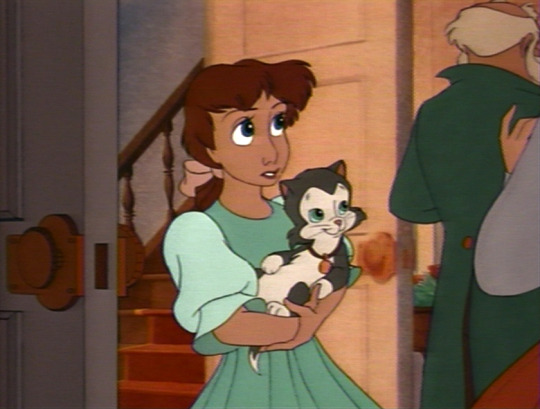
“I wonder if this is anything like what my pen pal Wendy went through with that Peter boy…nah, you’re overthinking it, Clara.”
But there’s no time for her to ponder the implications as a crack of thunder, gust of wind and explosion of fireworks marks the arrival of the final party guest – Drosselmeier. He comes bearing his greatest creation, an enchanting music box castle complete with marching soldiers, seven swans a-swimming, and figures dancing inside the ballroom. In another humorous scene from the original story, Clara and Fritz fawn over the castle while frustrating Drosselmeier with their requests to make the automated figures do more, leading him to go on a brief “kids today don’t appreciate shit” rant.
As the party guests waltz to the strains of more Tchaikovsky, Clara wanders by the tree and spies a present she hadn’t noticed before – a nutcracker in the shape of a soldier. He’s not the most handsome toy in the box, but there’s something charming about him that she is drawn to. Drosselmeier confesses that he’s just part of his gift for the family and demonstrates how he works. On seeing the Nutcracker, Fritz wrestles him out of Clara’s arms and insists he has a go. But because there are no nuts left, he tries one of his toy cannonballs and breaks its jaw. Drosselmeier cheers Clara up by telling a story of how the Nutcracker came to look as he does. And this is where things get…weird.
Now I don’t mind the inclusion of the story-within-a-story. I’m happy they go into how the Nutcracker was cursed unlike most other versions, and there’s some good gags thrown in that make me chuckle. It’s how they go about it that I take some issue with. First, look at the movie’s style looked so far.
The character designs are clearly inspired by Disney – big eyes, soft rounder faces, realistic body proportions for the main characters, only slightly exaggerated for the lesser ones. The backgrounds are warmly lit and richly detailed, like an early work by Thomas Kincade. Overall it feels like something out of a classic storybook.
Now here’s some screencaps from Drosselmeier’s story.
“All right, who changed the channel to Cartoon Network?”
The scene doesn’t even look like it’s from the same movie. It goes from feature film quality to a Saturday morning cartoon, and that’s not entirely coincidental. Lacewood Productions grew out of Hinton Animation Studios which primarily made, you guessed it, cartoons for tv. And Hinton Animation itself had its roots in Atkinson Film-Arts, the studio that produced The Raccoons, hence why some of the cast makes appearances. But because I couldn’t find anything on the making of The Nutcracker Prince, we’ll never know if they went this route because the budget ran out, or the animators didn’t feel comfortable drawing the entire movie in the Disney house style and worked out some kind of compromise, or they just wanted the reveal of the Nutcracker’s human form at the end to be an even bigger surprise. Given some time and creativity they might have been able to come up with something better. You could argue this is how Clara envisions the story playing out in her head, but I don’t think a child from the 1800’s would imagine a fairy tale in the style of Danny Antonucci. In fact, if you played music from Ed Edd and Eddy over this part it wouldn’t feel out of place. Everything is played up for nothing but laughs, not even the Nutcracker’s transformation into a lifeless object, which should be an emotional gut punch. And I’d be ok with all this if it was a short sequence, but it lasts fifteen minutes. That might not seem like long, but since this movie is only seventy-five minutes that means it takes up a good portion of its first half. Plus the cuts back and forth between the story to it being told reminds you of how jarring the whole sequence is compared to the rest of the film.
But on to the story itself. Drosselmeier’s tale takes place in a faraway kingdom belonging to a King who I can only describe Yosemite Sam in his golden years right down to the ornery western accent (it wasn’t until doing my research that I discovered he’s voiced by the Texan monster from the Beetlejuice cartoon which certainly explains it), an extreme doormat Queen, and their daughter, the “beautiful” but very spoiled and unfortunately named Princess Pirlipat. They have in their employ a world-famous clock maker and magician coincidentally also named Drosselmeier and his apprentice, his shy nephew Hans (Kiefer Sutherland).
“Patience, friends. The joke you’re all expecting is coming.”
The occasion on which this flashback takes place is the King’s birthday, and the Queen has put in an order for a cake made out of his favorite food, blue cheese (would that make it a blue cheesecake?) This has the unwanted side effect of drawing out every mouse in the palace. Led by the Mouse Queen (legendary comedienne Phyllis Diller) and her dimwitted son (Mike MacDonald), they pounce upon the cake just as the Queen is putting on the finishing touches.
With no time left to make a new cake, the Queen is forced to send it out to the King and his party guests. This disaster is almost salvaged by a sycophantic Emperor’s New Clothes-style response to the dessert, but Pirlipat ruins everything by whining how she refuses to eat that repulsive offal. The King promotes Drosselmeier to the post of Royal Exterminator and soon all the mice are caught – except the Mouse Queen and her son. She takes her revenge out on Pirlipat; using her dark magic she curses the princess with extreme ugliness, cementing it with a bite to the foot.
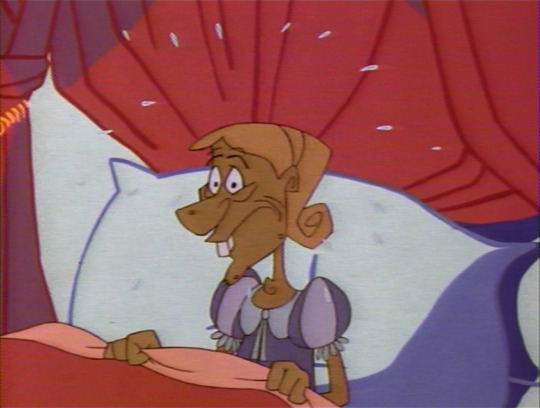
Oh please, that’s just Kellyanne Conway before her makeup.
Eager to blame somebody for Pirlipat’s state, the King is ready to execute Drosselmeier until the Queen suddenly intervenes and begs him to consider giving the clockmaker some time to reverse the curse. It was at this moment I realized the King and Queen here are like if the monarchs from Alice in Wonderland had their personalities switched. They even have the same body types as their Disney counterparts.
The King reluctantly acquiesces, but gives Drosselmeier and Hans no more than…well…did I already mention Kiefer Sutherland is in this movie?
youtube
“Your obligatory reference humor, all wrapped up in one neat package. Merry Christmas!”
So Hans and Drosselmeier study the princess to figure out a way to break the spell, not helped by Pirlipat’s constant ear-bleedingly grating crying. Her only comfort is Hans feeding her nuts he cracks for her himself. Inspired, Drosselmeier researches well into the night and discovers the cure for Pirlipat’s condition – the Krakatooth Nut, the hardest nut in the world. It can only be cracked open by a young man who’s never shaved or worn boots and they must take exactly seven steps to and from the person they’re feeding the nut to with their eyes shut and without stumbling, which even by fairy tale logic is some damn arbitrary rules.
The King invites noblemen from around the world to crack the Krakatooth with the promise of marrying Pirlipat and becoming heir to the kingdom if they succeed, though he has them and the rest of the court blindfolded so they won’t be scared off by her hideousness. Unfortunately each man who makes an attempt winds up with a mouth full of broken teeth. The Mouse Queen, confident in her evil plan, watches the misery play out with delight. Hans, however, decides to give it a try, and to Drosselmeier, the royal family, and the Mouse Queen and Prince’s surprise, he succeeds. Pirlipat is transformed back into her normal, terrible old self, however the court is too busy fawning over their restored icon to notice what happens next.
Enraged over being foiled, the Mouse Queen casts a curse on Hans to make him “the prince of the dolls”. Before he can take his final step backward, she bites his foot and he is transformed into a wide-smiling nutcracker. In his new form he accidentally knocks over a line of busts domino-style, the last of which the Mouse Queen is too late to escape from. I love it when villains are hit by instant karma. Alas, Pirlipat takes one look at Hans and refuses to marry a doll that’s not even half as ugly as she was moments ago.
Yep. Totally unmarriageable material.
On seeing his prospective son-in law for himself, the King accuses Drosselmeier of trying to trick his daughter into marrying one of his contraptions. He has the poor guy who’s shown nothing but years of loyalty and service to his outlandish demands banished forthwith while he and his wife and daughter celebrate their own selfish victory. I always hated how they never earned some kind of punishment for their behavior, but considering the boundary-shifting turmoil Europe endured before, during and after this tale was written, it’s more than likely these foolish monarchs will get what’s coming to them in the worst possible way down the line.
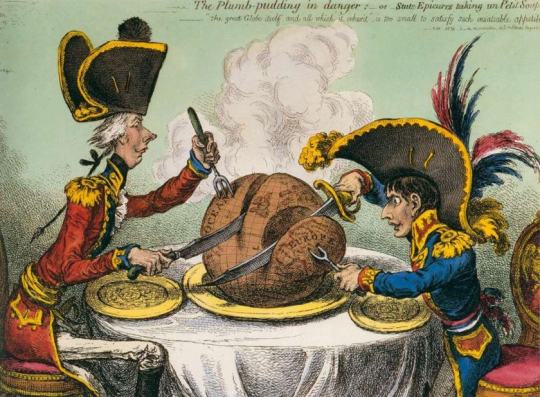
Enjoy your power while you can, assholes. Come the Napoleonic wars, you’re all royally screwed.
As for the Mouse Prince, he mourns his mother for all of ten seconds before realizing her death makes him the new Mouse King. He declares to Drosselmeier that he’ll have his revenge on the Nutcracker – not for killing mommie dearest but for smashing the end of his tail when the busts fell and making it go crooked.
With the story done, we abruptly return to the party and Clara expressing her disappointment in Hans’ unfair fate. Drosselmeier assures her that while Hans may be stuck as a Nutcracker, he’s still the rightful ruler of the magical kingdom of the dolls and the spell over him can be broken, but only if he defeats the Mouse King and wins the hand of a fair maiden. I love Clara’s reaction to this; she rolls her eyes and wonders why all fairy tales have the same solution.
Long after the party has ended and the Stahlbaums are fast asleep, a restless Clara sneaks downstairs with her kitty Pavlova to check on her Nutcracker. She introduces him to his new subjects, her toys – Marie, her old matronly doll Trudy, and Pantaloon, the ancient captain of Fritz’s toy soldiers. Taken by a music box’s melody, Clara shares a romantic song and dance with the Nutcracker to the tune of the Waltz of the Flowers, not unlike the one Louise and Eric had earlier.
youtube
And for those of you watching, yes, Clara is clearly rotoscoped when she’s dancing. I’m not against rotoscoping as long as animators don’t rely too heavily on it (COUGHBAKSHICOUGH), though the use of it here as well as in one other scene emphasizes how uneven the rest of the film’s animation is under scrutiny. I do wish there was a full version of this song somewhere though because it’s quite pretty.
The music comes to a sudden halt as Pavlova breaks an ornament. Clara quickly stashes the Nutcracker our of fear of being caught out of bed, but before she can return upstairs she’s startled by the famous ghostly image of Drosselmeier atop the grandfather clock in place of the decorative owl, his cloak billowing out like wings. He showers the entire parlor in pixie dust, and goofy-looking mice armed with forks and needles pop up from of every crevice. Pavlova scares them away from Clara until one arrives to scare him back – the Mouse King, looking far more intimidating than he did in the flashback.

One is an animation student’s design project, the other is Ratigan’s cousin. Would you believe they’re one and the same?
Drosselmeier also douses the toy cabinet with his magic and brings them all to life. The Nutcracker is woken up and, having no idea of what’s happened since the incident with Pirlipat, quickly has to come to grips with his new form and the fact that a sociopathic mouse has sworn a vendetta against him. And you thought the Hangover guys had it bad. Marie and Trudy plead him to take up his mantle as Prince of the Dolls and fight despite his inexperience. Fritz’s soldiers vow their loyalty and Pantaloon (voiced by Peter O’Freaking Toole) is made second-in-command. Though rather than do any actual fighting the old coot drones on and on in Shakespeare references.
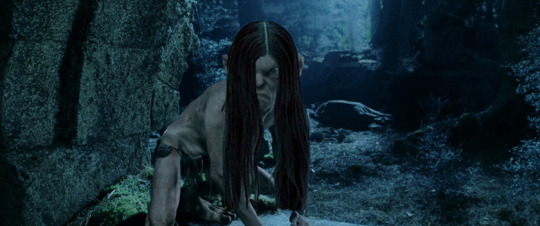
“So we’re not watching Ratatouille Peter O’Toole so much as Man of La Mancha Peter O’Toole. Imagine my delight.”
Actually, like the Marie/Clara name switch before, I have to wonder if this odd characteristic of Pantaloon is another subtle in-joke or reference towards the original story. Hoffman was a big Shakespeare fan and often referenced him in his writings, including The Nutcracker. In the book when Fritz’s soldiers desert the battle, the Nutcracker cries out the famous line from Richard the Third, “My kingdom for a horse!” (paired down here to a simple “Come back!” when the toy horses run free). In a weird way, having Pantaloon riff on Shakespeare is a nod to Hoffman. On top of that, one of his first lines is “All for one and one for all”, which everyone remembers from Alexandre Dumas’ The Three Musketeers. Years after Hoffman’s Nutcracker was published, Dumas wrote his own version of the story which is the lighter, softer one that the ballet takes the most cues from. So whether or not this was intentional is up for debate, but if it was I give the writers all the credit in the world for honoring both authors of The Nutcracker in such an obscure and subtle way.
The battle between the mice and the dolls promises to be an exciting one. The problem is once it gets going, it’s so wildly unfocused. The mice and dolls run around each other aimlessly firing and flailing at will. Clara could end all this just by kicking the mice to the other side of the room, but she just stands to the side and giggles at everything happening. Then there’s Marie, who in spite of Trudy strongarming her into helping the fight barely does anything other than scream in a stereotypical Southern accent and complain about how all this fighting is spoiling her complexion, like if she were a more spoiled version of Princess and the Frog’s Charlotte LaBouff. She’s marginally more tolerable that Pirlipat. Granted she does have one funny moment where her dress gets splattered with cheese and that’s what pushes her into a violent rage against the mice.
“And you will know my name is the Lord & Taylor when I lay my vengeance upon thee!”
Anyway, the mice hold down Nutcracker long enough for the Mouse King to have a go at killing him. Clara finally intervenes, throwing her slipper at the Mouse King and knocking him off his high toy horse. But she slips on a marble into the clock and falls unconscious.
Clara wakes up back in her bed on Christmas morning, her head wrapped up in bandages. Nobody believes what she saw the previous night, owing her delusions to a fever sustained from her injury. Drosselmeier pays Clara a surprise visit and presents her with a newly fixed Nutcracker. Grateful as she is, Clara calls him out for not doing anything when his own nephew was in danger, though Drosselmeier states he’s not the one who has the power to save him. Clara’s mother insists she stay in bed and do nothing for the rest of the day, which, come on Mom. Worst Christmas ever.
That evening the Mouse King also pops into Clara’s room to return her slipper. Awfully decent of him, all things considering. After making more big talk about how he’s gonna turn Nutcracker into a pile of splinters, Clara lures him into her drawer with the promise of some chocolates Fritz left her earlier and traps him in there. She flees downstairs to hide Nutcracker, but the Mouse King has mastered offscreen teleportation and threatens to kill Pavlova if she doesn’t hand him over. The owl on top of the clock changes into Drosselmeier and once again he brings the toys to life. This time it’s just for moral support as Nutcracker and the Mouse King battle mano-e-mouso up the Christmas tree. It’s a big improvement over the first battle. There’s more focus since it’s just the two of them fighting and there’s creative use of the terrain and presents around it. My one complaint is that Nutcracker doesn’t drunkenly tackle the tree itself at one point, but we can’t have everything we want for Christmas.
Whomsoever pulls the sword from the spruce shall become king of all Toyland! Oops, wrong mythos.
At one point the Mouse King nearly runs through a defenseless Nutcracker but Pantaloon bravely intervenes at the cost of a nasty back wound. Finally, Nutcracker delivers the killing blow and the Mouse King’s body crashes to the floor. The mice scatter and the toys declare victory. But Pantaloon’s batteries are about to expire, and since the Stahlbaums out of double-A’s the only way to save him is to get him to the Land of the Dolls; the gate to which is coincidentally right through Drosselmeier’s castle. Nutcracker eagerly invites Clara to join them, and after saying some mysterious something or other about time, Drosselmeier shrinks her down to their size with magic. They enter the castle, and Pavlova goes to inspect the Mouse King, which, for a decomposing corpse, seems to be growling an awful lot…
In the castle Marie gets sidetracked by the waltzing gentlemen while the rest continue on. They reach some lovely winter gardens where the snow is made of coconut icing and the royal swans Clara has fantasized earlier wait to take them on their journey. Since Marie is too late to join them, she has to settle for being dragged through the air on a common mallard.
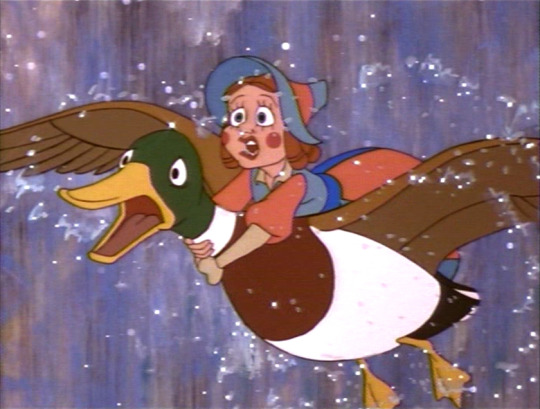
Still better than flying United Airlines.
The swans soar over a forest of Christmas trees up to the stars and through a magical waterfall that changes Clara and Nutcracker into attire befitting royalty and restores Pantaloon to health. They all land at a beautiful palace made of sweets where Nutcracker’s subjects give them a warm welcome. Clara and Nutcracker head out on to the ballroom floor to dance to my favorite piece from the ballet – scratch that, of any classical composer – the achingly beautiful Pas De Deux.
youtube
Like Clara’s solo before, the choreography is rotoscoped, but they’re much more clever at hiding it this time around. The dancing plays out like a dreamy montage with the moves fading in and out from one another, alternating between pink and blue silhouettes, minimally colored full-body shots, and more detailed animation reserved for closeups. There’s also an old-fashioned Vaseline-on-the-lens-style filter on, the kind normally reserved for romantic moments from Hollywood’s golden age which befits the tone they’re going for.
With the dance done, Nutcracker asks Clara to stay with him and rule the Land of the Dolls forever. Clara is sorely tempted, but something holds her back from saying yes. The idea of living in a candy castle with her dream prince and childhood friends is too good to be true, a perfect happy ending. And that’s just it – an ending. Clara has dreams beyond that will never come true if she settles, dreams of seeing the world and being a prima ballerina which can only happen if she chooses to grow up, and she wants to in spite of how much she’s fallen in love with Nutcracker. It would have hit harder if this theme of choosing to mature vs. clinging to girlhood was explored more throughout the movie, but the point still stands.
Now that the desire to grow up has taken hold, Pantaloon, Marie and Trudy change back into ordinary toys, the spark of life bestowed by childhood imagination put out. One by one, the denizens of the doll kingdom drop like flies, their number growing as Clara keeps justifying her refusal to stay.
And as if things couldn’t get any worse, guess who crashes the party?
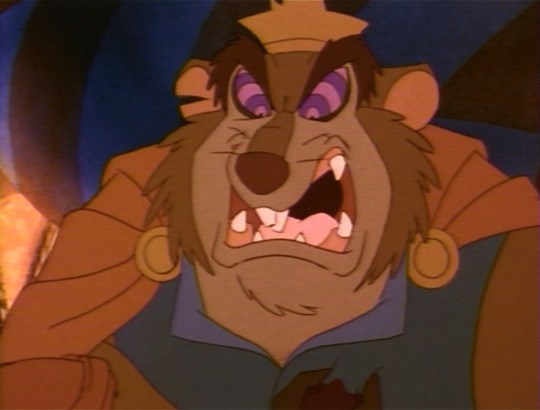
Ohhhhhh shiiiiit….
Up to this point the Mouse King was a comical villain who was difficult to take seriously. But now here he is like Ratigan in the final act of The Great Mouse Detective, bereft of his senses and embracing his inner animal. His chest wound is still bleeding, his breathing is ragged, he doesn’t even talk, and he shuffles forward like a zombie, but nothing holds him back his single-minded pursuit of Clara. You can’t even tell if he’s going after her because he recognizes the part she played in his eventual demise or he’s desperate to stick it to Nutcracker before he drops dead. Hell, maybe in his near-death state he’s so delusional that he thinks Clara IS Nutcracker. That makes it even more terrifying; he knows he’s dying but refuses to go without taking someone, anyone out with him in as violent a manner as possible.
The circle-eyes kind of kill it for me, though. I mean, when a bad guy or monster is cornering you in their final moments, which gaze is more threatening – bloodshot, glowing and blank, or colorful cartoon rings? Unless their name is Judge Doom, the answer should always be the former.
Defenseless, all Clara can do is pelt dessert at him. But it’s only delaying the inevitable. And when Nutcracker tries to help, the change slowly and painfully takes over him and he is forced to watch as his mortal enemy corners his true love, resulting in the most arresting visual of the movie.
Nutcracker gasps out Clara’s name one last time and morphs fully back into wood. A single tear remains on his face, the only sign he was ever truly alive.
The Mouse King traps Clara on the balcony, lunges at her and goes over the railing, finally taking himself out with a classic Disney villain fall. Clara pulls herself back up and sees the palace is now completely abandoned and filling up with mist. She cries desperately for her Nutcracker as the final heartrending strings of the Pas De Deux play, and the scene to slowly fades to black.
This scene…this whole scene from the moment the Pas De Deux began…how it got me when I was a kid. It broke my heart and did an echappé all over the pieces. Everything from the visuals to the acting and especially the music still punches me in the feels. For all my gripes about the inconsistent animation, this is the part of the movie where it absolutely shines. And thanks to the ramped up tension that follows every note, I’ve always associated this piece of Tchaikovsky’s score with poignant dramatic moments. Say what you will about the past hour of this movie, it is worth it for this excellent emotional climax.
Fritz bursts into Clara’s room startling her awake and declares Pavlova killed a crooked-tailed mouse by the clockwork castle. Clara dashes downstairs to the toy cabinet but finds Nutcracker is gone. She sprints out of the house straight to Drosselmeier’s shop. Oddly enough, he seems to be expecting her. Clara begs Drosselmeier to tell her if the story about the Nutcracker and the Mouse King is true for the sake of her sanity. But then, a handsome young man enters from the other room.

Drosselmeier introduces him as his nephew, Hans. Despite this apparently being their first time meeting, Hans greets her with familiarity, even bowing to her just as her Nutcracker Prince did. And his voice is one Clara would know anywhere. She in turn gives the perfect response.
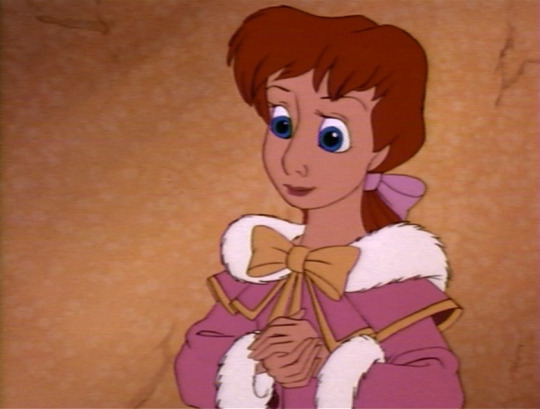
“Hello…Nutcracker.”
If the climax already left me nearly speechless than the finale takes whatever little words are left straight from my mouth. As far as endings go it’s near flawless. I’d say The Nutcracker Prince borrowed from Disney’s Beauty and the Beast if it weren’t for the fact that it came out the year before Beauty did. Like The Wizard of Oz, it knows how to leave you on an emotional high note. While it’s supposed to be ambiguous, it’s the kind where deep down you just know the real answer without any explanations given.

“Though I can only imagine how awkward it would have been after she said that if it did turn out to be a dream.”
“SHUT THE FUCK UP CYNICISM YOU WILL NOT RUIN THIS MOMENT FOR ME!!”
And because this was the 90’s, our end credits play over another Oscar-bait power ballad, this one being loosely inspired by the Waltz of the Flowers. Not one of the best, but still a good one to close the film on. Enjoy!
youtube
I honestly feel a little bad critiquing The Nutcracker Prince because at the end of the day it’s a fantasy, and fantasies play by their own emotional nonsensical surrealistic rules. It’d be like if Cinema Sins tried to blast a Jean Cocteau flick (and knowing those bastards’ egos they will if they haven’t already). Sure the characters aren’t the most deep, there’s some fluff in the story that could have been put to better use and the animation is inconsistent (characters go wildly off-model and if you pause at the right moment you’ve got plenty of fodder for the “DIDNEY WORL” meme) but when they get it right it’s wonderful. I’d say this and the obscure stop-motion version done by Sanrio (yes, the Hello Kitty factory) make for the most faithful and interesting retellings of The Nutcracker out there. I credit The Nutcracker Prince along with the Nutcracker Suite segment of Fantasia for introducing me to this magical music and story in the first place. I watched the tape quite a bit up until it got lost in the home entertainment shuffle, and enjoyed seeing it several times on the Disney Channel and Toon Disney during the holidays (and the occasional Christmas in July marathon). It’s not perfect, but hey, it wouldn’t be the holidays if you didn’t enjoy at least one imperfectly animated special that hits you over the head with nostalgia feels. Some people have Rankin-Bass, I have The Nutcracker Prince. And I hope the next generation will embrace it too.
Merry Christmas, and thank you for reading! Do you have a favorite version of The Nutcracker? Let me know in the comments! If you’d like to support me and see more reviews, consider supporting me on Patreon.
I’ll see you in the new year with Abby Kane’s requested review of Disney’s Pinocchio – that is, if my special Christmas present doesn’t keep me from finishing it on time (you’re going down, Ridley!!)
Artwork by Charles Moss.
Christmas Shelf Reviews: The Nutcracker Prince (1990) Merry Christmas everyone! To conclude this month of merrymaking we're looking at an animated Christmas cult classic that I have a bit of a soft spot for.
#1990&039;s#90&039;s#action#Action-Adventure#adventure#Alexandre Dumas#Always Come Back to You#animated#animated feature#animated movie#animated movie review#animation#Anne of Green Gables#ballet#battle#Canada#Canadian animation#Canadian movie#cartoon review#Christmas#Christmas movie#Christmas review#Clara#Clara and Hans#Clara Stahlbaum#cult classic#Dr. Stahlbaum#Drosselmeier#Drosselmeyer#ETA Hoffman
6 notes
·
View notes
Text
Tennessee Architecture, Buildings
Tennessee Architecture, Chattanooga Building, Architects, United States of America News
Tennessee Architecture : Buildings
Key American Architectural + Property Developments
Tennessee Building News
Tennessee Architecture News – latest additions to this page, arranged chronologically:
April 17, 2020 Garden Chapel Pavilion, Memphis Architects: archimania
One of the nation’s largest faith-based hospital systems was adding a new tower amidst a variety of aged buildings in an urban, land-locked environment. The campus has virtually no outdoor respite amenities and only a tiny, windowless space for reflection and prayer for its almost 10,000 associates, caregivers, and ambulatory patients. The hospital had scheduled a 1970’s concrete cooling tower for costly demolition and removal.
The architect suggested re-purposing this once nationally-heralded engineering achievement into a work of architecture—a chapel pavilion. A massive amount of embodied carbon exists in the well-crafted Brutalist concrete structure.
Its oversized cylindrical openings naturally lend themselves to the needed program of spiritual connection between the user and the open sky above. The project reveals an architectural solution while also making a statement about respecting and re-purposing the nation’s aging infrastructure.
Client: Methodist Healthcare Foundation General Contractor: Turner Construction
April 17, 2020 Alcove Residential Tower, Nashville Architects: Goettsch Partners image courtesy of architects office Alcove Residential Tower in Nashville Apartments Totaling 375,800 square feet, the building will feature such amenities as a rooftop game room, two pools and several communal alcoves.
June 21, 2019 Four Seasons Hotel and Private Residences Nashville Design: Solomon Cordwell Buenz (SCB) image courtesy of architects office Four Seasons Hotel and Private Residences Nashville
Dec 15, 2018 Miller Park Chattanooga Innovation District, Chattanooga Design: Spackman Mossop Michaels, landscape architecture firm & Eskew Dumez Ripple image Courtesy Spackman Mossop Michaels Miller Park Chattanooga Innovation District
Sep 7, 2018 Shelby Farms Park Buildings, Great View Drive North, Memphis Design: James Corner Field Operations and Marlon Blackwell Architects image courtesy of Chicago Athenaeum Shelby Farms Park Buildings in Memphis Shelby Farms Park, one of the largest urban parks in the country, has implemented a master plan, developed by James Corner Field Operations (JCFO), to revitalize the Park into a unique, 21st century landmark.
Aug 14, 2018 Memphis Teacher Residency Design: archmania, architects image courtesy of architects Memphis Teacher Residency Tennessee Building Memphis Teacher Residency, a faith-based, non-profit organization required a new space for recruitment, training, and supporting teachers through an urban teacher residency graduate program.
Jan 7, 2018 Barrel House 1-14 at the Jack Daniel Distillery, Lynchburg, Tennessee, USA Design: Tuck-Hinton Architects photograph : Andrew Pogue Building at Jack Daniel Distillery Anyone taking a guided tour of the Jack Daniel’s distillery would agree that visiting an active barrel house is an unforgettably profound olfactory experience. As a barrel of whiskey matures, a portion of its contents is lost to evaporation.
Oct 25, 2017 Crosstown Concourse in Memphis, Tennessee, USA photograph : Jamie Harmon Crosstown Concourse in Memphis In the heart of Memphis, Tennessee is the awakened community of Crosstown. The genesis of this urban revival dates back to 1927, where a premier Sears retail store animated the community. At its height, this art-deco building housed 1,500 employees.
Jun 4, 2014 Williams Street Loft Residence, Chattanooga Design: Hefferlin + Kronenberg Architects photo © Sarah Dorio Williams Street Loft in Chattanooga An outdoor gear and clothing mogul and his family came to us seeking to create an indoor/outdoor living compound in downtown Chattanooga. They purchased a 12,000 sf industrial building two doors down from their business headquarters. The property was a great fit for the industrial loft environment they desired.
Mar 25, 2014 Tennessee Affordable Residence, Chattanooga Design: Hefferlin + Kronenberg Architects photo © Harlan Hambright Fairmount Avenue Townhomes Tennessee – Chattanooga Fairmount Avenue Townhomes is an 18 unit, LEED Platinum certified, affordable townhouse development. The project is designed for the Chattanooga Housing Authority and provides low income housing in the desirable North Chattanooga Neighborhood.
Mar 21, 2014 Art Studio in Chattanooga Design: Hefferlin + Kronenberg Architects photo © Tim Street-Porter Akhriev Art Studio in Tennessee Hefferlin + Kronenberg Architects received an AIA award of excellence for the design of an art studio and apartment in a redeveloping downtown neighborhood of Chattanooga called the Southside District.
Mar 20, 2014 Tennessee Riverside Residence, Tellico Plains Design: Hefferlin + Kronenberg Architects photo © Sara Dario / Harlan Hambright Tellico Cabin Tennessee Hefferlin + Kronenberg Architects designed a cabin on the Tellico River for a doctor and his wife. He has been fishing the Tellico since childhood and the site holds an important sentimental value to him.
Jan 9, 2014 Alumni Hall – Vanderbilt University Development in Nashville Design: Bruner/Cott Associates photo : Richard Mandelkorn Vanderbilt University Nashville Building This project comprises the renewal of the university’s original student center, a 1925 Tudor Revival building designed by Henry C. Hibbs as a World War I memorial that is now listed on the National Register of Historic Places.
Jul 29, 2008 Franklin Woods Community Hospital, Nashville
More Tennessee Building projects online soon
Location: Tennessee, USA
Architecture in the United States of America
US Architecture Designs – chronological list
Developments in Neighbouring States
Alabama Architecture
Florida Buildings
North Carolina Architecture
South Carolina Architecture
Website: Memphis, Tennessee
American Houses
Housing USA
American Architect Studios
American Architects
American Architecture
Georgia Architects – Atlanta
Comments / photos for the Tennessee Architecture page welcome
Website: Tennessee, United States of America
The post Tennessee Architecture, Buildings appeared first on e-architect.
0 notes
Photo


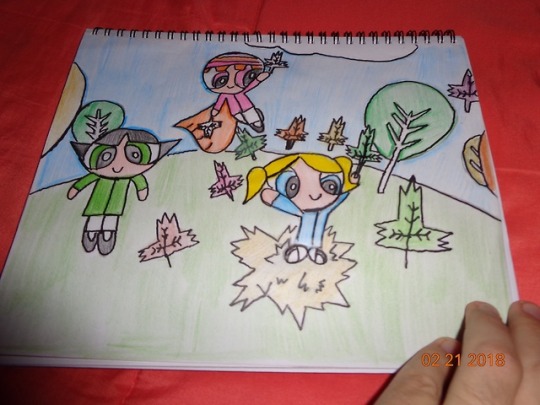

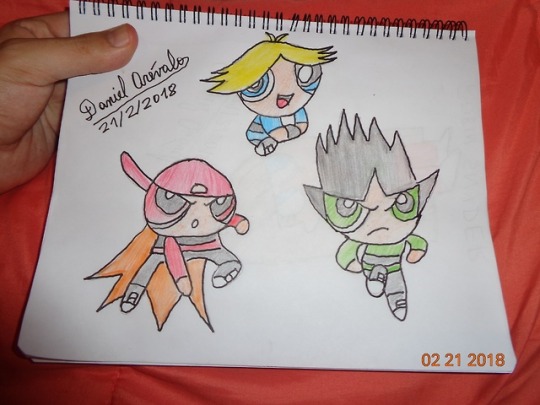


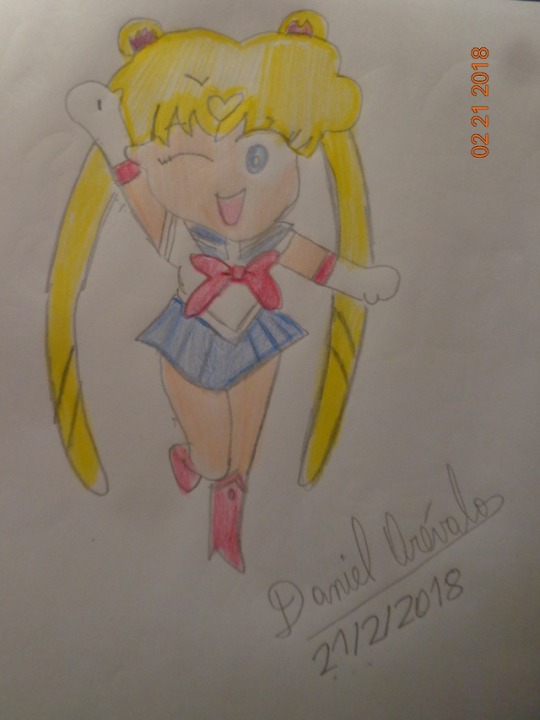
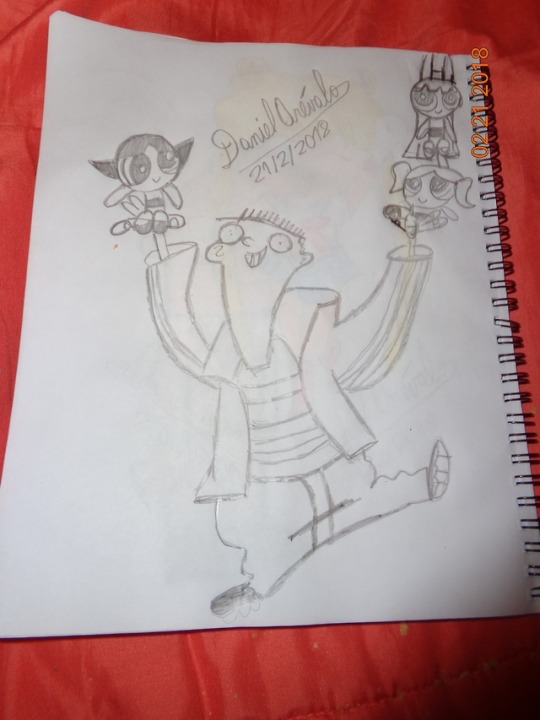
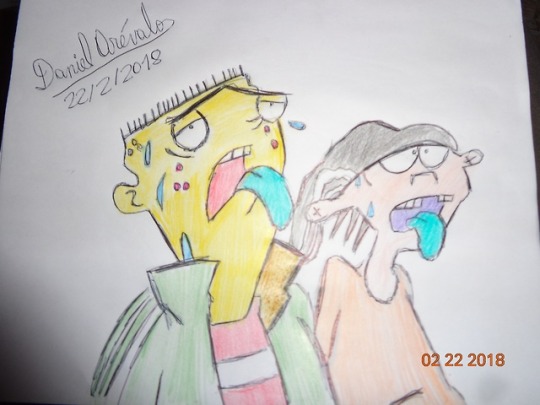
10 nuevos dibujos hoy viernes:
Tom de Tom y Jerry (c) Warner Bros
Olla y tetera (trabajo original)
3 dibujos de Las chicas súperpoderosas (las originales de mi niñez del CN antiguo) que son:
las 3 niñas en otoño (falta un mes para que empiece),Robin Snyder de la cuarta temporada de la serie ya mencionada y Los chicos cocosos (los tres dibujos son propiedad de Craig Mc Cracken,no de Nick Jennings y Cartoon Network)
Los mapaches (c) Kevin Gillis,Atkinson Film-Arts,Hinton Animation Studios,Canadian Broadcasting Corporation (CBC).
Adam León (Mi compañero de clase es un mono) con traje de color café claro (c) Timothy Cahill,Julie McNally Cahill,Cartoon Network
Sailor Moon chibi (c) Toei Animation
Ed (Ed,Edd y Eddy) con las chicas súperpoderosas (clásicas) (c) Danny Antonucci,Craig Mc Cracken y Cartoon Network
Y terminamos con Ed y Doble D cansados (c) Danny Antonucci,AKA Cartoon,Cartoon Network
#tom#tom y jerry#tom and jerry#olla#tetera#las chicas super poderosas#las chicas superpoderosas#las supernenas#las super nenas#the powerpuff girls#the powerpuff girls original#powerpuff girls original#robin snyder#los chicos cocosos#the rowdyruff boys#los mapaches#the raccoons#adam leon#adam lyon#mi compañero de clase es un mono#un mono en mi clase#my gym partner's a monkey#serena tsukino#sailor moon#chibi#bishojo senshi sailor moon#ed#ed edd y eddy#ed edd n eddy#ed edd and eddy
2 notes
·
View notes
Text
Pixar CG pioneers Pat Hanrahan and Edwin Catmull share $1M Turing Award
The 2019 Turing Award, one of the highest honors in computing, was today awarded to Pat Hanrahan and Ed Catmull, founding members of Pixar who helped shape the future of computer graphics. The two will share a $1M prize and of course the satisfaction of receiving this prestigious award for doing something they clearly love.
The award has recently been given to such luminaries as Tim Berners-Lee, cryptographer Martin Hellman, and last year, AI pioneers Yoshua Bengio, Geoffrey Hinton, and Yann LeCun.
Catmull was at Pixar for more than 30 years, appointed its president from the very beginning as a LucasFilm animation studio bought and repurposed by Steve Jobs. Hanrahan was an early hire, and between them the two would have had enormous effects on the world of CG, even if they hadn’t built the poster child for the technology.
I spoke with Catmull and Hanrahan about the origins of the field and their early work in it that the Association for Computing Machinery chose to recognize this year.
“When I started out, graphics didn’t really exist,” Hanrahan recalled. “I sort of discovered graphics in grad school, but there were no professors, no classes, it wasn’t even in the computer sciences, really.”
“CG wasn’t thought of as being at the same level as new architectures and languages,” said Catmull. “But we believed that it was going to fundamental tool going forward. it just took a long time to get here.”
That belief was shared by George Lucas, who hired Catmull to work on CG imagery way back in 1979. It wasn’t until 1986 that Pixar was formed and Hanrahan joined the team.
Hanrahan was only at Pixar for a few years, but during that time created several of the tools and techniques that essentially made modern CG imagery possible. The system for which he was the architect, RenderMan, was what enabled the complex lighting and shaders to be used, making a final image with a far more realistic feel than any that had come before. For anyone curious about the name, Hanrahan has a funny story:
“When I came out to California I ran into Jaron Lanier, he actually came up to Pixar, and got me all excited about VR,” he said. “Around that era you had the Walkman, the Discman, and Jaron said, what we need is a ‘RenderMan,’ you hang it on your belt and just put on the glasses and it renders these unbelievable scenes. But nobody else really liked the word RenderMan, so I got a lot of flak about that. I’m certainly not in marketing.”
Catmull’s contributions were equally important; as a researcher, he had established early techniques for Z-buffering in 3D environments (it’s really important) and texture mapping, one of the most fundamental processes to realistic CG graphics. Early on, as a graduate student, he built a new way of representing polygonal surfaces as smooth shapes that seemed lost to time… until years later it was iterated on by another researcher, who was hired by Catmull and brought the technique with him.
“It was so successful they switched out what they were doing with Bug’s Life,” Catmull said. “I was so busy building the company and making movies and so on, I wasn’t even aware until last year when the MPAA gave an award to me for developing these techniques, which are now the dominant technique in all animation.”
Clearly the mark these two left on the world of CG and moviemaking is considerable, but what they are most proud of, they told me, is nurturing the overlap between creativity and technology in their respective fields.
“What I’m most proud of is keeping an environment in Pixar where we kept the technology and the art in balance for so many years,” said Catmull. “We established a relationship between a group of artists who want to do something new and technical people that work on things people normally don’t see. It leads to this really phenomenal dynamic between the two.”
Hanrahan, for his part, looks back on a fruitful academic career and later, founding Tableau.
“I’m most excited about my teaching,” he said. “I just graduated my 40th grad student. They’ve gone off and done amazing stuff, I mean out of my group we’ve started 16 companies, and many are professors of computer graphics and so on. And Tableau was a huge thing for me — I think just building a company that’s part of the community and a good place to work, that stands out to me more than my technical achievements.”
I’ll be posting more of our wide-ranging interview soon. For now, congratulations to to the pair for their wide-ranging and influential work in computing and beyond.
0 notes
Text
Pixar CG pioneers Pat Hanrahan and Edwin Catmull share $1M Turing Award The 2019 Turing Award, one of the highest honors in computing, was today awarded to Pat Hanrahan and Ed Catmull, founding members of Pixar who helped shape the future of computer graphics. The award has recently been given to such luminaries as Tim Berners-Lee, cryptographer Martin Hellman, and last year AI pioneers Yoshua Bengio, Geoffrey Hinton, and Yann LeCun. Catmull was at Pixar for more than 30 years, appointed its president from the very beginning as a LucasFilm animation studio bought and repurposed by Steve Jobs. https://ift.tt/2whpl2F By Samy Morsy
from I.T MAN https://ift.tt/1cjthd7 via IFTTTBy Samy Morsy
0 notes
Text
David Wittels -Savage Dragon – Illustrator - Lacewood Productions
David Wittels -Savage Dragon – Lacewood Productions
Lacewood Productions was a Canadian animation studio based in Ottawa, Ontario. It produced a television series, Katie and Orbie, as well as specials based on For Better or For Worse, and the 1990 feature The Nutcracker Prince. In 1997, Paragon Entertainment Corporation took over the studio due to debt reasons. Paragon eventually folded, with most of Lacewood’s library and former assets being acquired by Amberwood Entertainment in 2000.
Lacewood was the successor to Hinton Animation Studios, a company created by Sheldon Wiseman, which closed down due to debt problems.The very first productions made by the studio were The Railway Dragon and its sequel The Birthday Dragon. Lacewood has also done animation services on the first season of The Ren and Stimpy Show. Lacewood has also done animation production in partnership with Universal Cartoon Studios on season 2 of Problem Child, Monster Force and 1995 episodes of The Savage Dragon.
David Wittels, Savage Dragon, Barbie & the Diamond Castle, Staff Manager. David Wittels is a professional illustrator from Vista, California. He has been nationally recognized by his sports illustrations & outdoor photography. He loves to travel with his wife and children Brooklyn, Montana, & Jefferson.
0 notes
Text
David Wittels -Savage Dragon – Lacewood Productions
David Wittels -Savage Dragon – Lacewood Productions
Lacewood Productions was a Canadian animation studio based in Ottawa, Ontario. It produced a television series, Katie and Orbie, as well as specials based on For Better or For Worse, and the 1990 feature The Nutcracker Prince. In 1997, Paragon Entertainment Corporation took over the studio due to debt reasons. Paragon eventually folded, with most of Lacewood’s library and former assets being acquired by Amberwood Entertainment in 2000.
Lacewood was the successor to Hinton Animation Studios, a company created by Sheldon Wiseman, which closed down due to debt problems.
The very first productions made by the studio were The Railway Dragon and its sequel The Birthday Dragon.
Lacewood has also done animation services on the first season of The Ren and Stimpy Show.
Lacewood has also done animation production in partnership with Universal Cartoon Studios on season 2 of Problem Child, Monster Force and 1995 episodes of The Savage Dragon.
David Wittels, Savage Dragon, Barbie & the Diamond Castle, Staff Manager. David Wittels is a professional illustrator from Vista, California. He has been nationally recognized by his sports illustrations & outdoor photography. He loves to travel with his wife and children Brooklyn, Montana, & Jefferson.
0 notes